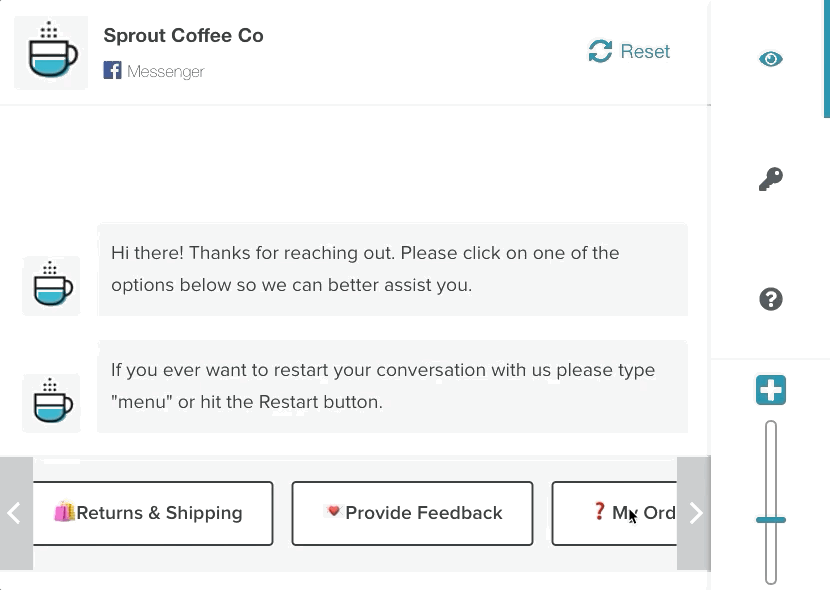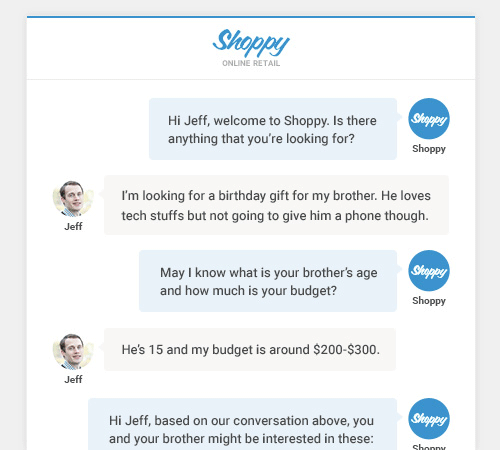Futureproof Your Small Business: Use Chatbots for Construction Automation
The future is definitely digital. If your small construction business is doing things manually, you’re already a dinosaur.
In a Software Advice construction industry trends survey, we found that most firms wanted to leverage technology for automating various construction operations.
So… when your business competitor is moving to automation, why are you missing out on the market opportunity?
But don’t worry too much. One way to “futureproof” your small construction business and boost your competitive edge in the market is by embracing automation technologies such as chatbots.
Gartner predicts that “in 2020, more bots and chatbots will be built and deployed across the globe than new mobile apps that year” (content available to only Gartner clients). Considering that 6,140 Android apps were released between Q3 2016 and Q1 2018, the market is going to be flooded with a staggering number of chatbots.
Therefore, small and midsize construction companies should prepare and execute a strategy for leveraging chatbot technology. Failing to do so will leave them at a disadvantage against competitors who use chatbots for automating business processes and being highly efficient.
In this report, we’ll look at how to futureproof your construction business using chatbot technology.
Here’s what we’ll cover:
How Chatbots Can Improve Construction Project Management
What Small Construction Companies Need to Know Before Using Chatbots
What Are Chatbots?
Chatbots are computer programs that can engage in meaningful conversation with humans. They can correctly understand and respond to text, voice or even image-based instructions. For that reason, chatbots could be used to automate information search, trigger alerts and assist you in performing tasks online.
Chatbots vary in their capabilities. Small construction businesses can start with a simple text-based, scripted chatbot. Or, they could build a contextual chatbot that possesses natural language understanding (NLU) capabilities.
Let’s look at these two more closely!
Scripted Chatbots
These are simple tools that combine menu-driven and keyword-recognizing capabilities. Menu-based chatbots offer multiple answer options to a user’s questions. On the other hand, keyword-recognition chatbots interpret a question by identifying certain keywords.

Example of a menu-driven chatbot (Source)
Scripted bots are easier to create as you don’t need coding skills. You can use third-party vendors, such as Flowxo, Quirobot or Guestfriend, which offer a drag-and-drop interface that allows you to easily create a chatbot.
Top use case: Construction firms can build a scripted chatbot and integrate it with their company’s Skype, Workplace by Facebook or Slack account to automate knowledge sharing and information search.
Instead of finding answers on the internal knowledge base or intranet, employees can get instant answers from the chatbot. They can ask questions about workplace safety, project schedule, contact information of key stakeholders and so on.
Contextual chatbots
These programs go beyond identifying keywords such as the difference between Yes or No. They understand the context of natural language and correctly analyze a user’s intent. As a result, these tools can provide nuanced and detailed responses, unlike the programmed answers of scripted bots.

Contextual chatbot analyzing the intent and context of a conversation (Source)
Contextual bots are advanced programs. Building one requires programming skills, such as knowledge of Python, and experience of platforms such as NLTK (Natural Language Processing).
To build one you should be familiar with chatbot development frameworks such as IBM’s Watson’s Assistant, Facebook’s Wit.ai and Microsoft’s Luis.ai. You can take it a step further and explore Amazon’s Lex to build a virtual customer assistant that combines text with voice recognition capabilities and graphical user interfaces.
Top use case: Contexual chatbots can be configured to access, analyze and pull records from different tools and databases. This makes them ideal tools for “real-time” information search.
For instance, a field technician working for a HVAC construction firm can search whether an equipment is available by simply asking a chatbot. They wouldn’t have to waste time downloading an Excel sheet to locate this information.
How Chatbots Can Improve Construction Project Management
Chatbots are relatively easy to build and can provide your small construction firm an edge against your competition.
Here are two ways in which chatbots can quickly automate construction-related processes and drive employee efficiency at your small business.
1. Boost team productivity with better collaboration: Chatbots can automate routine tasks that waste employees’ time and divert their focus from critical tasks.
For instance, a chatbot like Meekan can automatically schedule meetings for project members. The bot is intelligent enough to match team calendars and find a time slot that suits everyone’s schedules.
You can also create custom task chatbots using platforms, such as Kore.ai, which deliver timely and automated notifications to employees. These bots could include information such as weather updates on construction sites, updated equipment inventory or scheduled delivery timings.
Here’s an example scenario of how a subcontractor can use a chatbot to understand the status of an Request for Information (RFI) sent to a general contractor.
Subcontractor: What is the status of RFI – 01?
Task chatbot: Here’s what I pulled up from our construction management system.
RFI sent to Contractor. Awaiting reply.
Status: Open
Last updated: Feb 6, 2019
2. Ensure employee compliance to safety regulations: Chatbots that can automate information search come in handy during employee safety training. The regulatory chatbot Ami was developed for this reason by DF2020.
Like FAQ chatbots, the key capability of a regulatory chatbot is to quickly parse many legal documents and offer relevant answers to employee questions.
Given below is an example of how safety workers would be able to quickly understand new OSHA updates by asking the chatbot.
Worker: Why do I need to protect myself from exposure to respirable crystalline silica?
Regulatory chatbot: Small crystalline silica particles are harmful to you as it can lead to diseases such as lung cancer. To know about the OSHA standards on how you can protect yourself from RCS exposure, visit this link: https://www.osha.gov/dsg/topics/silicacrystalline/
What Small Construction Companies Need to Know Before Using Chatbots
Small construction companies looking to leverage chatbot technology must keep certain things in mind. Here are two pointers to help you successfully implement chatbots:
Understand your needs: If you’re looking for productivity enhancements, such as faster team collaboration, a scripted chatbot would be adequate. But if you want help with complex project financial calculations, then you need chatbots with advanced natural language understanding and AI capabilities.
Bottom Line: Ensure that you analyze your core requirement of chatbots before investing in one.
Examine your current IT expertise: Creating an advanced natural language processing chatbot can be a challenge for small construction companies with limited IT expertise. In this case, take the low-risk route of using existing chatbot integrations offered by tools such as Slack and Skype.
Alternately, you can explore chatbot development platforms, like the ones we have mentioned here, which don’t require programming skills.
Bottom Line: Start small and leverage existing chatbot integrations instead of trying to build one yourself.
Conclusion and Next Steps
As productivity enhancing tools, chatbots can help construction businesses improve onsite collaboration. Teams can make decisions faster with automated data collection, share documents easily with fewer clicks and get timely notifications of project progress.
If your construction firm has a substantial IT budget, then build your own chatbot. This would allow you to customize the chatbot’s functionalities and integrate it with your existing construction project management systems.
However, ensure that you select the right chatbot vendor for your business. Remember that there are platforms where you can build scripted chatbots for simple task automation, with minimal or no coding skills. But for creating contextual chatbots, you’ll need technical knowledge such as Python coding.
Budget-constrained small construction businesses should start by integrating chatbots with project [collaboration tools](https://www.softwareadvice.com/collaboration/) such as Slack, Workplace by Facebook and Trello.
If you already use one such solution for construction project collaboration, then check whether the vendor offers third-party integrations with chatbots. On the other hand, if you’re currently evaluating construction management solutions, then we recommend reading the buyer guides listed below.
Click the links below to learn about the differences in features, benefits and pricing of different construction solutions:
If you need further assistance on selecting the right construction management solution, call us at (844) 847-3290 for a no-obligation and free consultation with our software advisor.